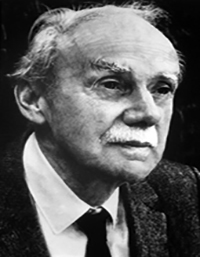
He was one of the greatest scientists of the 20th century — a pioneer in the field of theoretical physics whose name is often mentioned in the same breath as those of Isaac Newton and Albert Einstein. He also spent the last 14 years of his life teaching at The Florida State University until his death in 1984.
Paul A.M. Dirac was a giant of modern physics, one of the "founding fathers" of quantum mechanics. In that realm, he helped discover the basic laws of nature that govern the behavior of electrons and protons and how they interact. His work also led to the prediction of the existence of antimatter.
Now, an author has written a biography of Dirac that is bringing his life — and his science — to a newer generation. Graham Farmelo, himself a former theoretical physicist and now a senior research fellow at the Science Museum in London, has written "The Strangest Man: The Hidden Life of Paul Dirac, Mystic of the Atom" — perhaps the most revealing biography ever produced on the legendary scholar. Already a best-seller under a slightly different title in England, "The Strangest Man" has just been released in the United States.
Farmelo will come to Florida State on Oct. 1, 6 P.M. at the Florida State Alumni Center to discuss his book and share some of the insights he gained while researching the life of the brilliant yet enigmatic Dirac. His presentation, which is free and open to the public, is titled "Paul Dirac’s Road to Tallahassee."
"Although he was one of Einstein’s most admired colleagues, Dirac isn’t a household name the way Einstein is, and that’s unfortunate," said Mark Riley, chairman of the Department of Physics at Florida State. "However 100 years, even 500 years from now, Dirac will be remembered alongside Einstein as one of the greatest scientific minds in human history."
The title of Farmelo’s book comes from a statement by one of Dirac’s peers, the great Danish physicist Niels Bohr. "Dirac is the strangest man who ever visited my institute," Bohr once said. And indeed, Dirac was known by many for his peculiarities. Countless stories attest to his lack of conversational skills, his general social awkwardness, and his relentless application of cold logic to everything from literature to art. In his book, Farmelo even goes so far as to suggest that Dirac may have been mildly autistic — a claim that some of Dirac’s Florida State colleagues, who chatted or had lunch with him regularly, don’t necessarily agree with.
Although only recently available in this country, "The Strangest Man" already is being met with critical acclaim. A review in the Sept. 8 issue of The New York Times says the book "is both wonderfully written (certainly not a given in the category Accessible Biographies of Mathematical Physicists) and a thought-provoking meditation on human achievement, limitations and the relations between the two." Publisher’s Weekly, meanwhile, says that Farmelo’s "great affection for his odd but brilliant subject shows on every page, giving Dirac the biography any great scientist deserves."
Despite his renown in the world of physics, Dirac was able to walk around the Florida State campus virtually unnoticed during his tenure there as a professor emeritus from 1971 to 1984. It was perhaps that anonymity that made the shy, taciturn scholar feel most comfortable at his adopted university, one of his former colleagues suggests.
"He felt at home here,” said Steve Edwards, dean of the faculties emeritus and former chairman of the physics department at Florida State. "The physics faculty treated him like anybody else."
Still, "it is simply extraordinary that a scientist and Nobel laureate of Paul Dirac’s towering reputation chose to finish his academic career at Florida State," said Joseph Travis, dean of the university’s College of Arts and Sciences. "That he did so makes an enormous statement about the quality of this university and its physics department."
Dirac’s legacy lives on at Florida State. The Paul A.M. Dirac Science Library bears his name, as do two named professorships, one in the Department of Physics and the other in the Department of Chemistry and Biochemistry.




